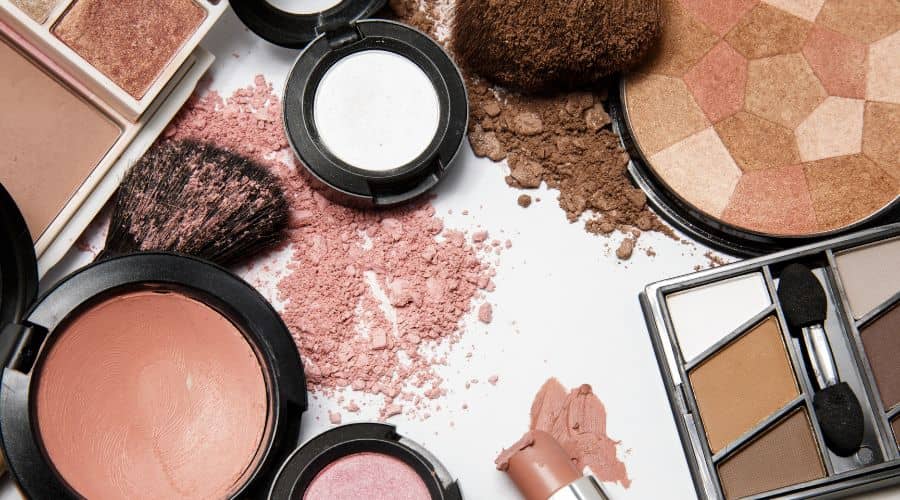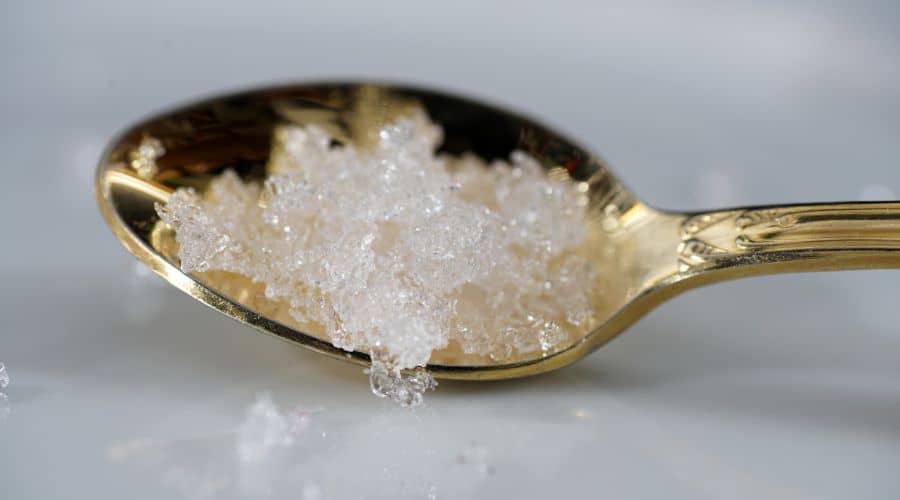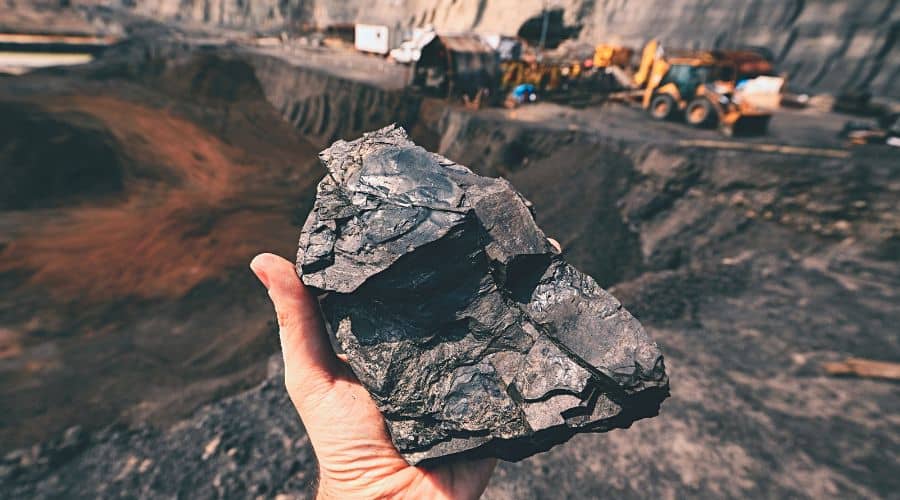
If I asked you to list the ingredients of all the makeup products you use regularly, would you be able to? Probably not. Those scientific names aren’t exactly part of the vocabulary of the everyday American.
This lack of familiarity with the ingredients means that most people don’t know which makeup ingredients to avoid while shopping for natural cosmetic products.
You see, some ingredients are beneficial and safe, but many others cause harm. Toxic chemicals in cosmetic products have been linked to allergies, hormonal disruptions, cancer, and other side effects. They don’t just sit on your skin. They can get absorbed into your bloodstream and build up.
Today, we discuss toxic makeup ingredients and how to avoid them so that you stay beautiful and healthy.
What is Makeup Made From?
There are thousands of products in the cosmetics market. Those products have wildly different ingredient combinations. Lip gloss made by one company will have different ingredients from lip gloss made by a competing company.
Approximately 12,500 ingredients have been approved for use in the United States. A standard cosmetic product has between 15 and 50 ingredients in it. While each product’s formula is different, most contain a combination of some core ingredients like water, emulsifier, preservative, thickener, emollient, color, fragrance, and pH stabilizers.
Statics say that the average woman uses 9-15 cosmetic products every day. So what does this tell us? If you add it up, women put approximately 550 ingredients on their skin. Not all of those ingredients are helpful. In fact, a good number are toxic for humans.
12 Makeup Ingredients to Avoid
So, which bad ingredients in makeup should you be on the lookout for? The first step to protecting yourself is knowing what might harm you. Here are 10 makeup ingredients to avoid.
1. Parabens
Parabens are common in shampoos, spray tanning products, moisturizers, shaving gels, lubricants, and makeup in general.
Parabens are preservative agents commonly used in multiple products, including cleaning products. They’re one of the leading makeup ingredients to avoid because they act as endocrine disruptors by mimicking estrogen.
Parabens have been linked to skin cancer, breast cancer, and decreased sperm count. These chemicals may also cause reproductive and developmental disorders.
2. Sodium lauryl sulfate (SLS)
SLS is typically found in cleansing products such as toothpaste, foundation, body wash, shampoo, mouthwash, and facewash. It is a harsh sulfate known for causing acne around the mouth and chin because it clogs pores.
SLS can also cause allergic reaction, causes or exacerbates skin irritation, and can inflict damage to the eye. Additionally, this ingredient disrupts the skin’s natural barrier and oil balance, causing the skin to dry up.
 Sodium lauryl sulfate can cause allergic reactions and skin irritation
Sodium lauryl sulfate can cause allergic reactions and skin irritation
3. Petroleum distillates
Petroleum distillates can be in mascara and petroleum jelly. Made from the same crude oil that powers cars and planes, petroleum is used to seal in moisture which, admittedly, does very well.
Petroleum works as a cheap filler ingredient. However, it’s a known carcinogen and may cause contact dermatitis. To check if your makeup product contains petroleum, look for it under paraffin wax, methylbenzene, mineral oils, benzene, phenylmethane, etc.
4. Fragrance
Fragrances are one of the top five allergens. They can contain hormonal disruptors, and they can irritate the skin.
The problem with fragrance is that federal law doesn’t require companies to list the chemicals found in their fragrance mixture. Companies can hide their proprietary blends, and you won’t know what’s in them.
5. Butylated hydroxyanisole (BHA)
BHA is a carcinogen used as a preservative in food and a fragrance in cosmetics. It has been shown to exhibit neurotoxic effects. BHA also affects the reproductive system’s development and thyroid hormone levels. Look for it in exfoliants, perfume, sunscreen, hair products, and antiperspirants.
6. Coal Tar (aminophenol, diaminobenzene, phenylenediamine)
Coal tar is a coal processing byproduct found commonly in hair dye and shampoo. It is a carcinogen whose long-term effects on hair stylists have been studied. While Europe has banned coal tar in hair products, the FDA has approved the use of coal tar in certain products like psoriasis shampoos. Unfortunately, the long-term safety of the products hasn’t been proven. We feel it’s best to avoid any product with these ingredients.
 Coal tar is a coal processing byproduct found commonly in hair dye and shampoo
Coal tar is a coal processing byproduct found commonly in hair dye and shampoo
7. Polyethylene
You know those tiny plastic beads inside scrubs and exfoliates? Well, that’s polyethylene, the most commonly produced plastic.
Companies love using polyethylene because it’s gentler on the skin than exfoliates like walnut shells. The problem is polyethylene is a skin irritant. You don’t want to use it on broken skin, trust me. It also doesn’t get filtered in our sewage system, so it contaminates waterways.
8. Triclosan and triclocarban
Triclosan is used as an antibacterial agent, antiperspirant, and preservative. It used to be popular in the 1990s when antibacterial products were all the rage but eventually, the FDA banned it in some soaps. This is because triclosan and triclocarban have been found to disrupt hormones, impair muscle and immune function, increase allergies, and cause bacterial resistance.
Unfortunately, despite being banned in soap, you can still find these chemicals in toothpaste, face wash, deodorant, and antibacterial soaps.
9. Formaldehyde, dibutyl phthalate, and toluene
Nicknamed the toxic trio, formaldehyde, dibutyl phthalate, and toluene chemicals have been linked to congenital disabilities, respiratory issues, headaches, and endocrine disorders.
Formaldehyde is used as a preservative and is found commonly in nail polish. Pregnant women are advised to avoid nail polish or use non-toxic nail polish brands instead.
Sometimes, formaldehyde isn’t an active ingredient in a product. However, still, it may be given off as a gas by other components such as Diazolidinyl Urea.
10. Oxybenzone
Oxybenzone is a high-risk chemical found in sunscreen. This chemical has been found to act like estrogen and can cause endometriosis.
Animal studies have found that it can affect sperm production in animals. Additionally, it causes skin allergies.
11. Retinyl palmitate, Retinyl acetate, Retinoic acid, and Retinol
Retinol products are all the rage due to their anti-aging properties. What you probably don’t know is that such products are only meant for nighttime use because, in the sunlight, they become carcinogenic. Unfortunately, some brands add retinol to their daytime cosmetics.
To be safe, use organic skincare products before bed and steer clear of them in your cosmetics.
12. Hydroquinone
Hydroquinone is an active ingredient most found in skin lighteners. Scientists believe that if you use this skin-bleaching chemical often, it can cause ochronosis. This skin disease leaves you with disfiguring and irreversible blue-black lesions on your skin.
What is The Most Common Chemical in Makeup?
Water forms the base in almost every cosmetic product. It acts as a solvent for the other ingredients and helps form emulsion. The water used in cosmetics formulation must be free from microbes, toxins, and other pollutants.
Effects of Toxic Ingredients Used in Cosmetics
So, what’s the problem with toxic ingredients in makeup? Why should we care?
To put it simply, your body’s health can be adversely affected. You wouldn’t eat recklessly, so why not treat your skin the same way?
Harmful ingredients in makeup get absorbed in your skin. Over time, they accumulate inside your body and eventually cause harm to your body organs.
These ingredients can cause allergic reactions, hair loss, eye injuries, and chemical burns. So instead of enhancing your beauty, harmful components in makeup cause deterioration. This is why it’s essential to be vigilant.
How To Avoid Toxic Ingredients In Makeup
If you’re worried about ingredients not being good for you, you can take these steps to make sure that you only use products that are safe by these steps:
- Do your own research: You’re your own best advocate. Look up ingredients with fancy or long names to see if they’re toxic. Keep up to date on the makeup ingredients to avoid. Check out the Environmental Working Group’s Skin Deep Cosmetics Database to see if a product you’re interested in is toxic.
- Count the ingredients: Avoid a product with an ingredient list a mile long. Toxic beauty products tend to have many ingredients in them. Stick to products that are simple with a smaller number of components.
- Don’t get distracted by trends: Nowadays, companies love using all sorts of buzzwords to get your attention. You’ll see ‘vegan’ or ‘locally sourced’ on labels, but that doesn’t mean that it’s necessarily true. Do your own research and look for third-party certifications to ensure you’re buying the real deal.
- Don’t prolong exposure: Sometimes, some products are safe or at least not harmful if you limit their use.
- Use natural makeup: The best and safest thing to do is to avoid chemical-based products altogether and start buying all-natural makeup brands.
Makeup is part of the everyday lives of millions of women. Despite this popularity, the product you use should be safe and toxin-free. The sad reality is toxic chemicals are common in cosmetic products, which is why people need to know the makeup ingredients to avoid. Luckily, there’s plenty that you can do to ensure that you’re staying safe while looking your best.
Toxic ingredients aren’t the only problem in the makeup industry. Learn about animal experiments in the cosmetics industry.
You Might Also Like:

![]() Jamie - Cofounder
Jamie - Cofounder
Hi, I hope you enjoyed reading this article.
If you are looking for more ways to live an eco-conscious lifestyles, then check out our complete guide here.
Thanks for stopping by - Jamie


